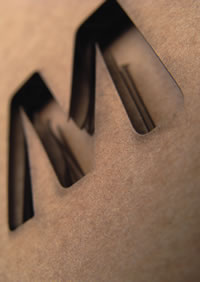The Myth Of the Adirondack Backwoodsman: From the Golden Years to Consumer Society
DOI:
https://doi.org/10.26754/ojs_misc/mj.20109413Palabras clave:
Adirondack backwoodsman, Mito, Mimesis, Kenneth Burke, Northrop FryeResumen
El objetivo de este artículo es rastrear el desarrollo del mito como herramienta sociológica a través del análisis del backwoodsman de Adirondack de los años dorados (una categoría que incluye guías, cazadores y tramperos) como arquetipo literario de la era romántica y su posterior declive con la llegada del industrialismo y la cultura del consumo. Siguiendo la premisa de Kenneth Burke de que la literatura es un "equipo para vivir" destinado a apoyar el "bienestar humano", sostengo que el significado del backwoodsman como "estrategia" responde a un empeño nacionalista que funciona bajo la dinámica de la mímesis. Con vistas a explorar estos juegos miméticos y la perfección cíclica del mito en cuestión como equipamiento para vivir, se aplica el marco teórico de Northrop Frye como argumento de apoyo. En la parte final del artículo, sostengo que las nuevas orientaciones literarias que retratan al leñador como producto de consumo rompen el ciclo, provocando la extinción del guía como héroe. Esta etapa final ejemplifica el proceso por el cual la historia supera al mito y supera el potencial del arquetipo como "equipo para vivir".
Descargas
Referencias
ARGULLOL, Rafael. 2008. El Héroe y el Único. Barcelona: Acantilado.
BRUMLEY, Charles. 1994. Guides of the Adirondacks: A History. Utica: North Country Books.
BURKE, Edmund. (1803) 1990. A Philosophical Enquiry Into the Origin of Our Ideas of the Sublime and the Beautiful. Oxford: Oxford U.P.
BURKE, Kenneth. 1973. The Philosophy of Literary Form. Berkeley: University of California Press.
BYRON-CURTISS, Arthur Lester. 2009. The Life and Adventures of Nat Foster— Trapper and Hunter of the Adirondacks. Charleston, South Carolina: BiblioBazaar.
COOPER, James Fenimore. (1757) 2005. The Last of the Mohicans. New York: Signet Classics.
COUPE, Laurence. 2009. Myth. New York: Routledge.
DEAN, Bradley P. 2007. “Natural History, Romanticism, and Thoreau”. In Lewis, Michael. (ed.) American Wilderness. A New History. New York: Oxford U.P.: 73-89.
DONALDSON, Alfred L. 2009. A History of the Adirondacks. Charleston, South Carolina: BiblioBazaar.
EMERSON, Ralph Waldo. (1858) 1994. “The Adirondacs”. In Bloom, Harold, and Paul Kane. (eds.) Emerson: Collected Poems and Essays. New York: The Library of America: 149-158.
FLUCK,Winfried. 1996. “The American Romance and the Changing Functions of the Imaginary”. New Literary History 27 (3): 415-457.
FRYE, Northrop. (1957) 1973. “Fictional Modes”. In Burrows, David, Frederick Lapides, and John Shawcross. (eds.) Myths and Motifs in Literature. New York: The Free Press: 60-62.
GERSTER, Arpad Geyza. 2005. Notes Collected in the Adirondacks (1895 & 1896). Lunenburg, Vermont: The Adirondack Museum.
GRADY, Joseph. 2002. The Adirondacks, Fulton Chain-Big Moose Region. Utica: North Country Books.
HANDLER, Richard. 1986. “Authenticity”. Anthropology Today 2 (1): 2-4.
HEADLEY, Joel T. 2006. The Adirondack; or, Life in the Woods. Ann Arbor: University of Michigan Library.
HOFFMAN, Charles Fenno. 2007. Wild Scenes in the Forest and the Prairie, Volume I. Whitefish, Montana: Kessinger Publishing.
JAMIESON, Paul, and Neal BURDICK. (eds.) 2009. The Adirondack Reader. New York: The Adirondack Mountain Club.
LEWIS, R.W.B. 1955. The American Adam. Chicago: University of Chicago Press.
MURRAY, William Henry Harrison. 2009. Adventures in the Wilderness, or, Camp-Life in the Adirondacks. Charleston, South Carolina: BiblioBazaar.
NASH, Roderick Frazier. 2001. Wilderness and the American Mind. New Haven: Yale U.P.
SCHNEIDER, Paul. 1998. The Adirondacks. A History of America’s First Wilderness. New York: Owl Books.
SIMMS, Jeptha Root. 2007. Trappers of New York. Ann Arbor: University of Michigan Library.
STODDARD, Seneca Ray. 2008. The Adirondacks Illustrated. Bedford, Massachusetts: Applewood Books.
TERRIE, Philip G. Contested Terrain. 2008. New York: Syracuse U.P.
TRILLING, Lionel. 1972. Sincerity and Authenticity. Cambridge: Harvard U.P.
WARNER, Charles Dudley. 2008. The Complete Writings of Charles Dudley Warner. Volume 3. Charleston, South Carolina: BiblioBazaar.
WHITE, William Chapman. 1985. Adirondack Country. New York: Syracuse U.P.
WILLIAMS, J. Robert. “Gateways to the Wilderness”. In Burdick, Neal. (ed.) A Century Wild. 1885-1985. New York: The Chauncy Press: 69-82.
Descargas
Publicado
Número
Sección
Licencia

Esta obra está bajo una licencia internacional Creative Commons Atribución-NoComercial 4.0.


